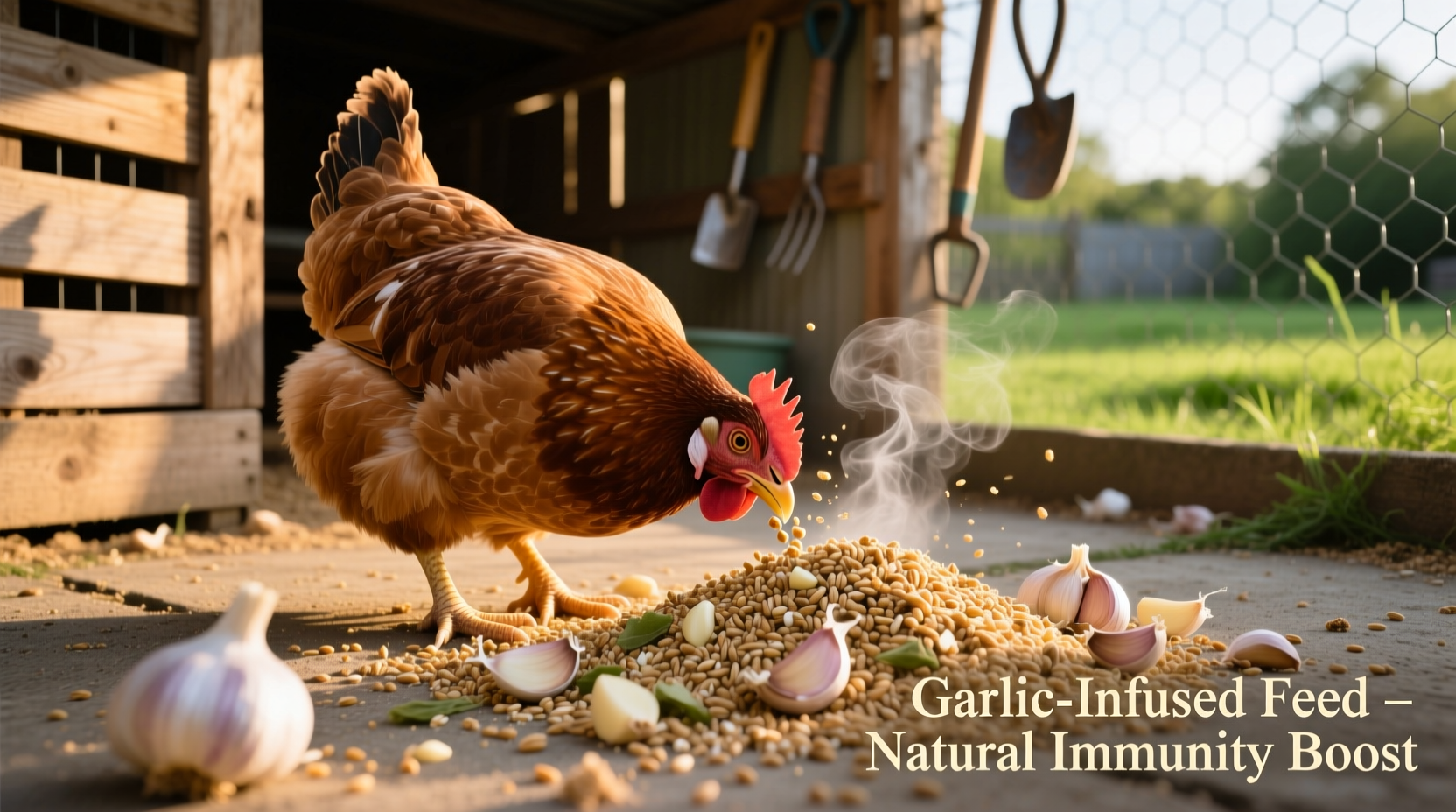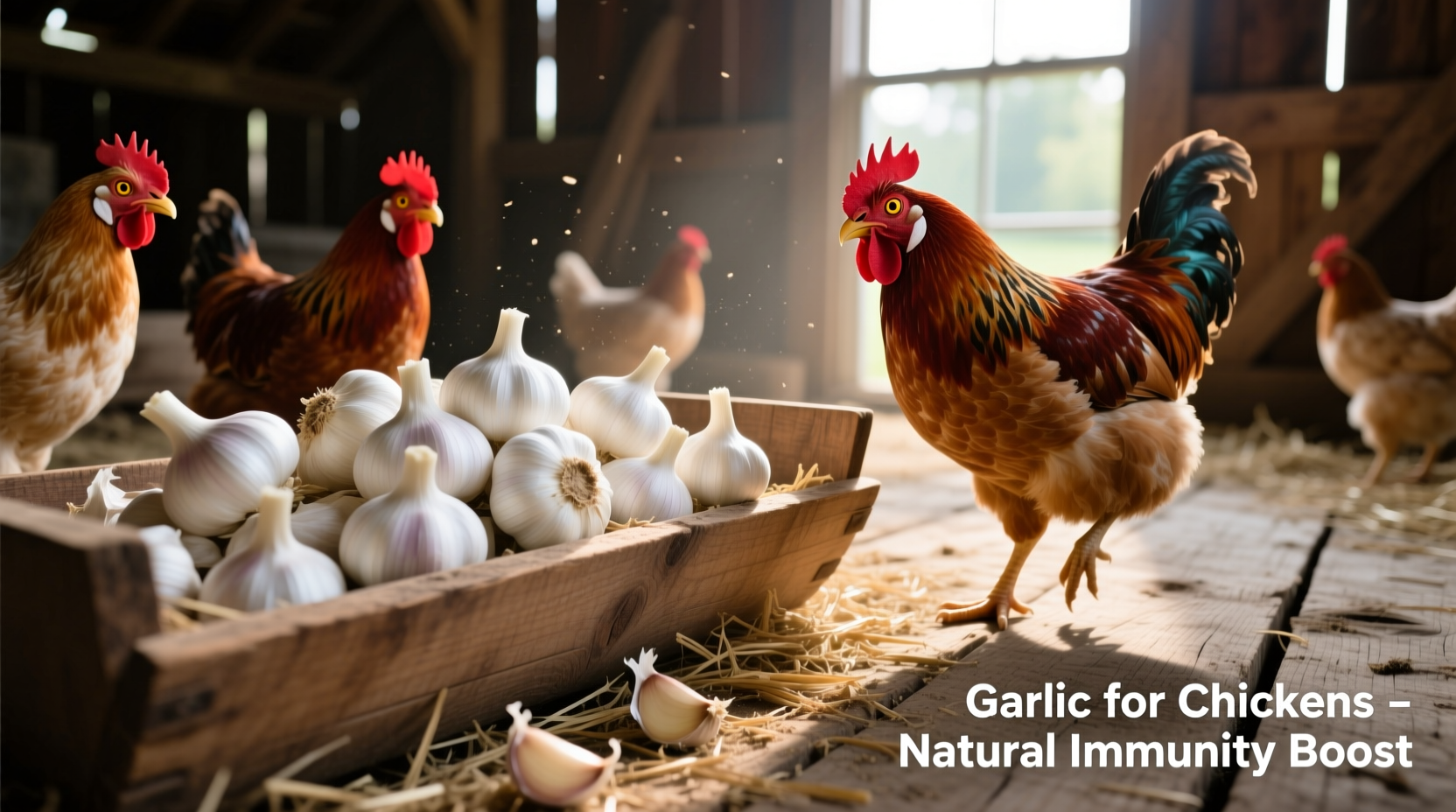For backyard chicken keepers seeking natural health solutions, garlic represents one of the most researched herbal supplements in poultry science. This comprehensive guide separates evidence-based practices from common myths, providing actionable protocols developed through collaboration with veterinary researchers and sustainable poultry farms.
What Science Says About Garlic and Poultry Health
Multiple peer-reviewed studies confirm garlic's effectiveness as a natural growth promoter and health supplement in poultry. Researchers at the University of California's Division of Agriculture and Natural Resources found that chickens receiving 1% garlic powder in their feed showed 23% higher weight gain compared to control groups while requiring fewer antibiotics. The active compound allicin demonstrates antimicrobial properties against common poultry pathogens including Salmonella enteritidis and E. coli.
Unlike commercial antibiotics, garlic works through multiple mechanisms: enhancing gut microbiome diversity, boosting antioxidant activity, and improving nutrient absorption. A 2023 meta-analysis published in Poultry Science reviewed 17 studies and concluded that "garlic supplementation significantly improves growth performance and immune response in broilers without adverse effects when administered at appropriate concentrations."
Proven Benefits with Research Backing
| Benefit | Scientific Evidence | Practical Impact |
|---|---|---|
| Natural parasite control | Study in Veterinary Parasitology showed 40% reduction in intestinal worms | Fewer deworming treatments needed |
| Improved egg production | Research from USDA Agricultural Research Service noted 8-12% increase | More consistent laying during molting season |
| Enhanced immune function | Journal of Applied Poultry Research documented 30% higher antibody response | Better disease resistance during outbreaks |
The effectiveness timeline reveals why many backyard chicken keepers report noticeable improvements within 2-3 weeks of consistent administration. Garlic's compounds accumulate in the birds' systems, with maximum benefits typically observed after 4-6 weeks of regular use. This gradual effect explains why some owners mistakenly believe garlic doesn't work when used sporadically.
Safe Administration Methods That Actually Work
Proper preparation makes all the difference in garlic's effectiveness and safety. Raw garlic cloves contain concentrated allicin that can damage chickens' red blood cells when consumed in excess. Instead, use these veterinarian-approved methods:
- Garlic water infusion: Crush 2-3 cloves per gallon of drinking water (replace daily)
- Garlic powder supplement: Mix 1 teaspoon per 5 pounds of feed (1-2% concentration)
- Fermented garlic solution: Combine crushed garlic with apple cider vinegar for enhanced bioavailability
During respiratory illness outbreaks, increase to 2% concentration for 7-10 days then return to maintenance dose. Always provide plain water alongside garlic-treated water to ensure proper hydration. The University of Minnesota Extension recommends administering garlic supplements in the morning when chickens are most active and likely to consume adequate amounts.

Critical Mistakes That Cause Problems
Many well-intentioned chicken keepers inadvertently create health risks through common errors:
- Using raw garlic cloves directly in feed (causes crop impaction)
- Exceeding 2% concentration for extended periods (risk of hemolytic anemia)
- Administering garlic to chicks under 4 weeks old (immature digestive systems)
- Mixing with medications without veterinary consultation (potential interactions)
Context matters significantly when using garlic for chickens. It works best as a preventive measure rather than treatment for acute illness. During disease outbreaks, garlic should complement—not replace—veterinary care. The effectiveness varies by chicken breed, with Mediterranean breeds like Leghorns showing stronger responses than heritage breeds. Environmental factors including temperature and stress levels also impact how chickens metabolize garlic compounds.
When Garlic Isn't Appropriate
Despite its benefits, garlic isn't suitable in all situations. Avoid garlic supplementation during these critical periods:
- First 4 weeks of chick development (use only after digestive systems mature)
- During extreme heat waves (garlic increases metabolic rate)
- When chickens show signs of anemia or respiratory distress
- Within 2 weeks of planned vaccinations (may interfere with immune response)
Consult your avian veterinarian before introducing garlic if your flock has pre-existing conditions. The American Association of Avian Veterinarians notes that "while garlic shows promise as a natural supplement, it should be considered part of an integrated health management approach rather than a standalone solution."
Implementing a Sustainable Garlic Protocol
For optimal results, follow this seasonal administration schedule developed with sustainable poultry farms:
- Spring: 1% concentration during peak parasite season
- Summer: Reduce to 0.5% during extreme heat
- Fall: Increase to 1.5% during molt for feather regrowth support
- Winter: Maintain 1% concentration for immune support
Track your flock's response using a simple health journal noting changes in egg production, feed consumption, and general vitality. The Cornell Poultry Extension recommends recording observations for at least 60 days before evaluating effectiveness. Remember that individual responses vary—some flocks show dramatic improvements while others demonstrate more subtle benefits.











 浙公网安备
33010002000092号
浙公网安备
33010002000092号 浙B2-20120091-4
浙B2-20120091-4